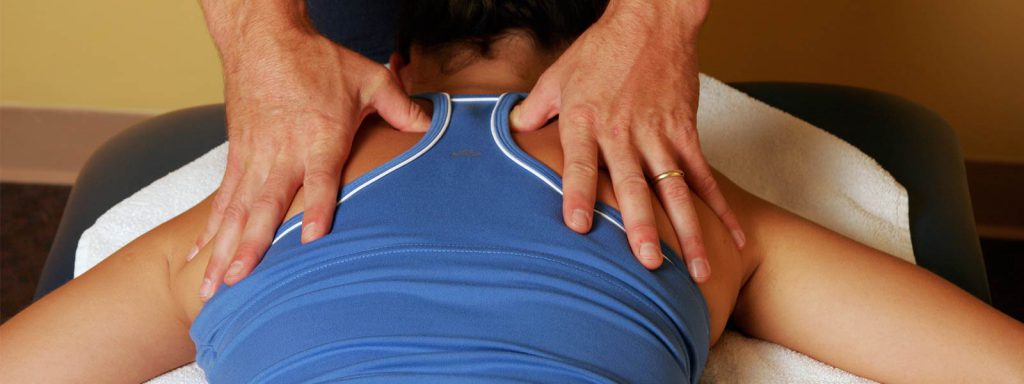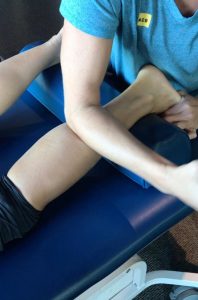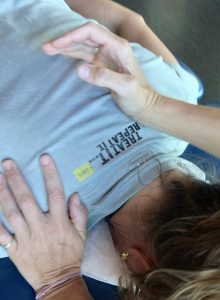
Starting the rehabilitation process following an injury can be intimidating, especially when you’re in pain. Don’t worry! You and your physical therapist will collaborate in setting goals and creating a game plan to recover and prevent future injuries. At first, your therapist will be hands-on. As you progress, you’ll become more independent in your exercises and injury management.
In an outpatient setting like JACO Rehab, your physical therapist will utilize a variety of techniques to help alleviate and eventually resolve your pain and dysfunction. This can range from stretching and strengthening exercises to manual interventions such as joint mobilizations and soft tissue work.
The “massage” portion of your physical therapy session often refers to soft tissue mobilization, during which your physical therapist will manipulate the affected musculature to assist in increasing circulation, blood flow, and flexibility, or even promote relaxation. We use different techniques to help you tolerate independent stretching, improve body awareness, and reduced fear around movement.
A Word About Your Anatomy
At the heart of our body’s movement system lies our skeleton. There are 206 bones that comprise the human body, all of which are covered and attached via over 600 musculoskeletal structures to assist in the movement of our everyday lives. These muscles have specific origins and insertion points, which dictate joint movements when contracted.
For example, your biceps brachii (most commonly known as your biceps), spans the length of your upper arm from above your shoulder to below your elbow. When contracted, this structure enables elbow flexion (bending), forearm supination (turning a doorknob), and shoulder flexion (lifting your arm in front of you).
When an injury occurs, these muscles can become stiff, painful, and limit movement and strength. Reduced muscle integrity to the biceps can limit any or all of those three movements in addition to causing compensation from adjacent muscles in the neck, shoulder, and mid-back.
“Massage,” or soft tissue mobilization (STM) usually relieves pain and stiffness by applying constant pressure to the affected muscles. The amount of pressure your physical therapist applies varies depending on your preference, pain tolerance, amount of restriction, and the targeted outcome.
At your first visit, your physical therapist will measure range of motion, strength, and overall functional movement at your affected joint to determine which muscles are heavily impacted and may benefit from STM.
What Do I Expect from a Physical Therapy “Massage?”
Physical therapists utilize different types of STM to target troublesome areas and facilitate a specific goal.
Your very basic STM generally consists of medium to deep pressure on the affected muscle. This aims to reduce tension and restriction that limits joint mobility. It may be painful initially if your target muscle is tender due to weakness, overuse, or guarding. But pain diminishes as the area gets used to the pressure, so give it a chance to work.
Cross-friction massage is frequently used to mobilize scar tissue or improve mobility to tendons (the attachment point of muscles to bones). This is performed in a motion against the grain of the structure, often with deeper pressure intending to “break up” built-up scarring below the surface of the skin.
On the opposite end of the spectrum, a technique called effleurage is commonly used in Swedish-style massage. It aims to target superficial areas of swelling, desensitize the skin, and create overall relaxation. These gentle, large strokes encourage the movement of fluid that accumulated from an operation. They can also assist in reducing pain and sensitivity to affected areas.
Soft tissue work is not meant to hurt you or increase pain after the session, but rather to encourage movement. If soft tissue mobilization causes more pain, speak up! At JACO Rehab, your physical therapist may spend 15-40 minutes on STM to your affected joint if deemed necessary. But remember that the goal is to reduce hands-on treatment and get you independent.
Physical Therapy vs. Massage Therapy
So what’s the big difference between physical therapy and massage therapy?
In physical therapy, our goal is to utilize a variety of manual techniques and exercises to rehabilitate a specific injury or deficit. We use STM to relax your muscles, increase circulation, and facilitate movement. The goal is to enable you to perform stretching and strengthening exercises, improving daily activities with fewer restrictions. Eventually, we expect you to become independent in your exercise routine to prevent further “flare” of these muscles. Although we love you, we hope to help you avoid returning for future treatment for the same issues!
Massage therapy aims to provide similar benefits to your physical body, but also your emotional and psychological state. A massage therapist focuses on alleviating tension to promote relaxation, but most likely will not follow up with exercises or postural activities to help you maintain your new limber form! These can be great for temporary pain relief or just to treat yourself. But you don’t typically receive the strength-building and body awareness integration that you get from physical therapy massage.
Reach Out!
We hope this helps you better understand what your physical therapist is doing during your “massage” portion of treatment! We’re excited to help initiate your rehab journey! If you have any further questions, don’t hesitate to reach out to JACO Rehab at 808-381-8947.
Written by Kristen Shimabukuro, DPT

